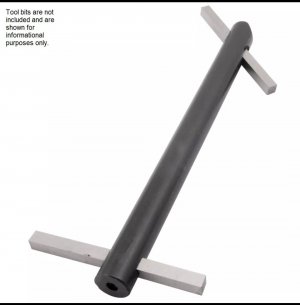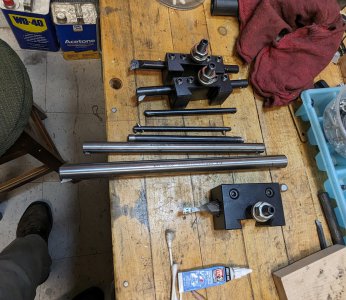I honestly have never used one yet.

I am aware of the basics of clearance and rake, but does anyone use these with cemented carbide? The bits are not offset so tipping the bar a bit would add clearance as would running above center a bit.
I recently bought a bunch of 60⁰ angled cemented carbide tools brand new in the box. I don't have a nice carbide grinder so I was looking at ways to utilize them for internal threading without radically changing the sharp factory grind.
Because the square hole in the bar is on center, if you hold the bar on center it would automatically cause the edge to be above center. Would that be enough to give a cemented carbide tool the clearance it needs? A slight tip closer to center would also give more clearance. Both situations would cause a negative angle cut.
Just considering the best use of this type of bar.

I am aware of the basics of clearance and rake, but does anyone use these with cemented carbide? The bits are not offset so tipping the bar a bit would add clearance as would running above center a bit.
I recently bought a bunch of 60⁰ angled cemented carbide tools brand new in the box. I don't have a nice carbide grinder so I was looking at ways to utilize them for internal threading without radically changing the sharp factory grind.
Because the square hole in the bar is on center, if you hold the bar on center it would automatically cause the edge to be above center. Would that be enough to give a cemented carbide tool the clearance it needs? A slight tip closer to center would also give more clearance. Both situations would cause a negative angle cut.
Just considering the best use of this type of bar.


